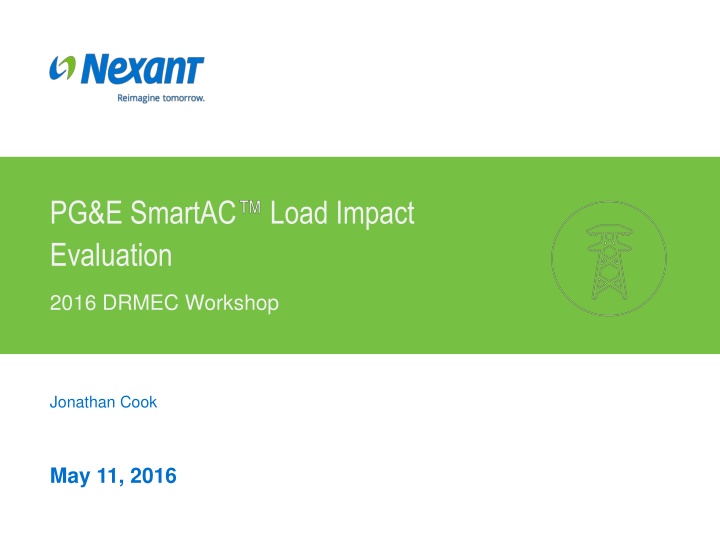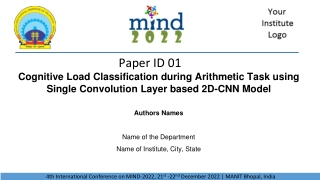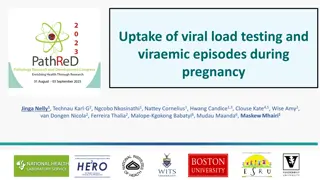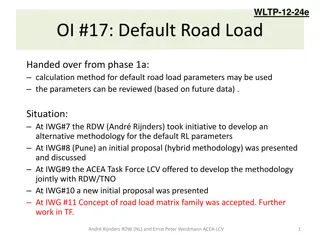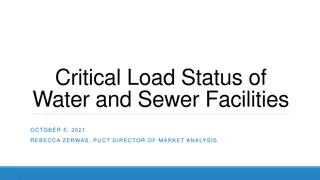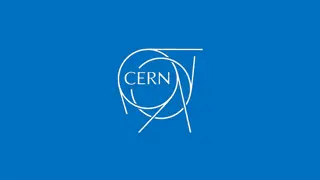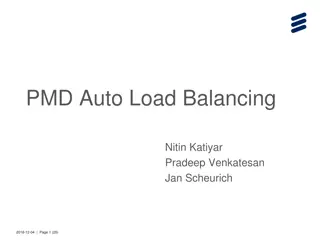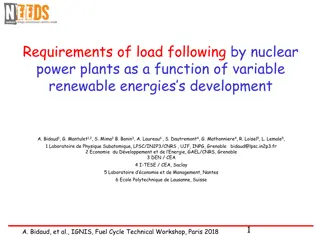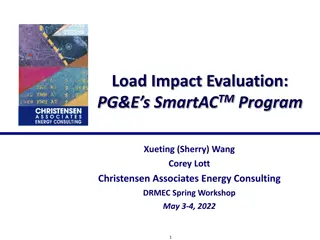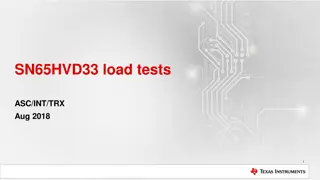PG&E SmartAC Evaluation Load Impact 2016 DRMEC Workshop
This content delves into the evaluation of PG&E's SmartAC program in 2016, focusing on its impact on AC load control through the installation of control devices. It covers program availability, experimental design, 2015 test events, treatment groups, and more.
Download Presentation

Please find below an Image/Link to download the presentation.
The content on the website is provided AS IS for your information and personal use only. It may not be sold, licensed, or shared on other websites without obtaining consent from the author.If you encounter any issues during the download, it is possible that the publisher has removed the file from their server.
You are allowed to download the files provided on this website for personal or commercial use, subject to the condition that they are used lawfully. All files are the property of their respective owners.
The content on the website is provided AS IS for your information and personal use only. It may not be sold, licensed, or shared on other websites without obtaining consent from the author.
E N D
Presentation Transcript
PG&E SmartAC Evaluation Load Impact 2016 DRMEC Workshop Jonathan Cook May 11, 2016
Program Overview AC load control through installation of control devices that limit the duty cycles of AC units Two types of devices: Switches and PCTs Only switches are currently offered for new customers Residential and small/medium businesses (SMB) 151,651 residential accounts and 4,616 SMB accounts at end of summer 2015 No SMB events since 2011 Events can be called for testing purposes or in response to emergency conditions Events occur between May 1st and October 31st, for up to 6 hours or less in each event Program Availability 100 hours of availability (38 actual) No maximum number of events (11 called in 2015) 2
Ex Post 3
SmartAC Experimental Design Randomized Control Trial (RCT) for each event SmartAC population randomly divided into ten groups of approximately equal size based on the last digit of a device s serial number On a typical event day, some groups are called to have their A/C units cycled (treatment group) The groups that are not called serve as a control group whose load can be compared to the treatment group to estimate load impacts Why does it work? Serial number is unrelated to any features of A/C or home that determine energy use Because serial number is effectively random, usage of the uncalled groups provide an unbiased estimate of what usage would have been for the controlled devices had they not been called (counterfactual) 4
2015 Test Events SmartRate Day Weekend Event Cascading Event Treatment Groups Event Date Start Time Stop Time 8 1:00 pm 3:00 pm June 25 Yes No Yes 3 3:00 pm 6:00 pm June 30* Yes No No 7 7:00 pm 8:00 pm July 1 Yes No No 9 4:00 pm 7:00 pm July 28 Yes No No 0, 1, 5, 7 4:00 pm 7:00 pm July 29 Yes No No 9 1:00 pm 5:00 pm August 15 No Yes No 8 4:00 pm 6:00 pm 2 12:00 pm 1:00 pm 4 1:00 pm 2:00 pm 3 2:00 pm 3:00 pm August 17 Yes No Yes 6 3:00 pm 6:00 pm 8 6:00 pm 7:00 pm 9 7:00 pm 9:00 pm September 8 No No No 3 1:00 pm 3:00 pm September 9 Yes No No 0, 1, 5, 7 4:00 pm 7:00 pm September 10 Yes No No 8 4:00 pm 7:00 pm September 11 Yes No No 2 3:00 pm 6:00 pm * June 30 was PG&E s system peak day, but the SmartAC event occurred after the peak hour (HE 18) 5
Summary of Ex Post Impacts for 4-5 PM Event Date Customers Called Ref Load (kW) Avg. Impact (kW) Agg. Impact (MW) Avg. Temp ( F) % Impact 6/25 12,095 2.53 0.57 23% 7.0 97.3 7/1 12,485 2.45 0.40 16% 5.0 94.5 7/28 48,168 2.42 0.49 20% 23.8 98.5 7/29 12,390 2.90 0.66 23% 8.1 99.3 8/15 16,767 2.20 0.39 18% 6.6 96.6 8/17 11,124 2.85 0.63 22% 7.0 99.1 9/9 48,613 2.57 0.50 19% 24.3 100.3 9/10* 12,689 2.79 0.53 19% 6.8 99.2 9/11 12,410 2.52 0.45 18% 5.6 95.9 Avg. 20,749 2.58 0.51 20% 10.5 97.9 * The average load impact during HE 17 on 9/10 (CAISO peak) was 0.54 kW and the aggregate impact was 6.8 MW. Note: The June 30 and September 8 events are not included because they were called from 7 to 8 PM and 1 to 3 PM, respectively. 6
Impacts are lower than previous years at comparable temperatures 1.5 4 to 5 PM Impact per Customer (kW) 1 .5 0 60 70 80 90 Mean17 2011 2012-2013 2014 2015 7
Reference Loads are Lower Reference Loads on Event Days 4 Reference Load during Hour 17 3 2 1 60 70 80 90 Mean17 2011 2012-2013 2014 2015 8
ExpressStat PCTs arent functioning properly LCR ExpressStat UtilityPro 1.0 0.8 0.6 Absolute impact (kW) 0.4 0.2 0.0 -0.2 -0.4 1 4 7 10 13 16 19 22 Hour Ending 9
Older switches arent as reliable as newer ones Physical Connectivity Communication Failure Rate Failure Rate by Switch Vintage 30 100% Percent of Devices Present and 25 98% Connected Properly 20 Failure Rate (%) 96% 15 94% 10 92% 5 90% 0 88% 2006 2008 2010 Switch Vintage 2012 2014 2016 2007 2008 2009 2010 Switch Vintage 2011 2012 2013 2014 10
Ex Ante 11
Four Fundamental Steps to Produce Ex Ante Forecasts 1. Estimate the relationship between load impacts and weather conditions for each hour in the resource adequacy window and all subsequent hours (snapback) using historical ex post results (2011-2015) 2. Estimate relationship between usage and temperature on event days and hot, non-event days (to expand the number of observations) for control customers to predict reference loads under ex ante weather conditions 3. Combine reference loads with impact estimates to infer load shapes for SmartAC participants 4. Scale up average customer impacts to aggregate impacts using forecasted enrollment provided by PG&E 12
Enrollment Forecast Residential SMB LCA 2015 2015 2016 2017 to 2026 2016 2017 2026 51,533 Greater Bay Area 50,086 49,320 1,542 1,391 1,309 753 17,823 Greater Fresno 17,729 17,719 462 413 388 224 916 Humboldt 925 920 37 34 32 18 7,985 Kern 8,351 8,432 246 225 197 122 8,629 Northern Coast 8,629 8,483 492 450 394 243 32,461 Other 33,067 32,805 1,103 919 864 497 17,020 Sierra 16,907 16,834 347 317 299 172 15,284 Stockton 15,492 15,511 387 351 330 190 151,651 Total 151,186 150,024 4,616 4,100 3,856 2,220 13
Residential Ex Ante Forecasts (2017) 2015 Ex Ante (1-6 PM, PG&E Aug. 1-in-2) Per Customer (kW) 2014 Ex Ante (1-6 PM, PG&E Aug. 1-in-2) Per Customer (kW) 2015 Ex Post (4-6 PM, Aug. 15) LCA Per Aggregate (MW) Aggregate (MW) Aggregate (MW) Enrollment Enrollment Enrollment Customer (kW) Greater Bay Area 51,533 0.45 2.0 49,320 0.36 17.8 53,993 0.41 22.2 Greater Fresno 17,823 0.50 0.8 17,719 0.68 12.1 17,466 0.71 12.4 916 Humboldt 0.57 0.1 920 0.15 0.1 N/A N/A N/A 7,985 Kern 0.65 0.5 8,432 0.65 5.5 8,068 0.74 5.9 Northern Coast 8,629 0.52 0.4 8,483 0.30 2.6 8,988 0.29 2.6 32,461 Other 0.42 1.3 32,805 0.55 18.0 34,336 0.58 20.1 17,020 Sierra 0.30 0.4 16,834 0.48 8.1 16,947 0.53 8.9 15,284 Stockton 0.39 0.6 15,511 0.56 8.6 14,736 0.60 8.9 151,651 Total 0.40 6.6 150,024 0.48 72.7 154,534 0.52 81.0 14
Residential Ex Ante Forecasts (2017) 2015 Ex Ante (1-6 PM, PG&E Aug. 1-in-2) Per Customer (kW) 2014 Ex Ante (1-6 PM, PG&E Aug. 1-in-2) Per Customer (kW) 2015 Ex Post (4-6 PM, Aug. 15) LCA Per Aggregate (MW) Aggregate (MW) Aggregate (MW) Enrollment Enrollment Enrollment Customer (kW) Greater Bay Area 2.0 49,320 17.8 53,993 0.41 22.2 51,533 0.45 0.36 Greater Fresno 0.8 17,719 12.1 17,466 0.71 12.4 17,823 0.50 0.68 0.1 920 0.1 N/A N/A N/A 916 Humboldt 0.57 0.15 0.5 8,432 5.5 8,068 0.74 5.9 7,985 Kern 0.65 0.65 Northern Coast 0.4 8,483 2.6 8,988 0.29 2.6 8,629 0.52 0.30 1.3 32,805 18.0 34,336 0.58 20.1 32,461 Other 0.42 0.55 0.4 16,834 8.1 16,947 0.53 8.9 17,020 Sierra 0.30 0.48 0.6 15,511 8.6 14,736 0.60 8.9 15,284 Stockton 0.39 0.56 6.6 150,024 72.7 154,534 0.52 81.0 151,651 Total 0.40 0.48 15
Residential Ex Ante Forecasts (2017) 2015 Ex Ante (1-6 PM, PG&E Aug. 1-in-2) Per Customer (kW) 2014 Ex Ante (1-6 PM, PG&E Aug. 1-in-2) Per Customer (kW) 2015 Ex Post (4-6 PM, Aug. 15) LCA Per Aggregate (MW) Aggregate (MW) Aggregate (MW) Enrollment Enrollment Enrollment Customer (kW) Greater Bay Area 51,533 0.45 2.0 49,320 0.36 17.8 53,993 0.41 22.2 Greater Fresno 17,823 0.50 0.8 17,719 0.68 12.1 17,466 0.71 12.4 916 Humboldt 0.57 0.1 920 0.15 0.1 N/A N/A N/A 7,985 Kern 0.65 0.5 8,432 0.65 5.5 8,068 0.74 5.9 Northern Coast 8,629 0.52 0.4 8,483 0.30 2.6 8,988 0.29 2.6 32,461 Other 0.42 1.3 32,805 0.55 18.0 34,336 0.58 20.1 17,020 Sierra 0.30 0.4 16,834 0.48 8.1 16,947 0.53 8.9 15,284 Stockton 0.39 0.6 15,511 0.56 8.6 14,736 0.60 8.9 151,651 Total 0.40 6.6 150,024 0.48 72.7 154,534 0.52 81.0 16
Device Type LCR ExpressStat UtilityPro 1.0 0.8 0.6 Absolute impact (kW) 0.4 0.2 0.0 -0.2 -0.4 1 4 7 10 13 16 19 22 Hour Ending 18
Single Family vs. Multi-family 0.8 0.6 Absolute impact (kW) 0.4 0.2 0.0 -0.2 -0.4 1 4 7 10 13 16 19 22 Hour Ending Single-family Multi-family 19
Marketing Strategy 0.8 0.6 0.4 Absolute impact (kW) 0.2 0.0 -0.2 -0.4 -0.6 1 4 7 10 13 16 19 22 Hour Ending New Old 20
Physical Switch Connectivity 100% Percent of Devices Present and Connected Properly 98% 96% 94% 92% 90% 88% 2006 2007 2008 2009 2010 Switch Vintage 2011 2012 2013 2014 2015 2016 22
Overall Operability # of Switches in SmartAC Population Physical Failure Rate Communications Failure Rate Overall Failure Rate Switch Vintage % of Total Switches 2007 8,912 6% 11% 25% 33% 2008 44,132 30% 9% 10% 18% 2009 14,549 10% 11% 12% 22% 2010 17,643 12% 6% 10% 15% 2011 22,275 15% 11% 13% 23% 2012 8,827 6% 6% 10% 15% 2013 12,307 8% 4% 12% 16% 2014 10,765 7% 2% 10% 12% 2015 10,204 7% 3% 10% 13% All 149,615 100% 8% 12% 19% 24
Conclusions and Recommendations Downward trend in impacts that was first noticed in 2014 evaluation was exacerbated in 2015 ExpressStat PCTs Decline in reliability of older switches Declining reference loads? Additional analysis needed to understand PG&E s options going forward Additional information about program performance by new segments Single family impacts larger than multi-family New marketing strategy increases impacts Inconclusive comparisons between CARE and Non-CARE 25
Questions and Discussion Contact Information: Jonathan Cook jonathancook@nexant.com 202-974-0615 26
